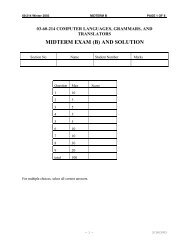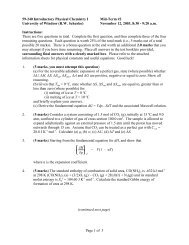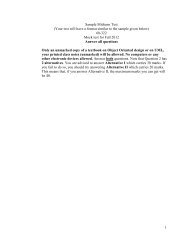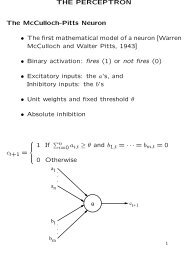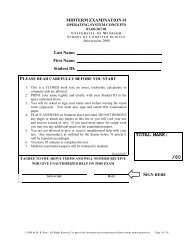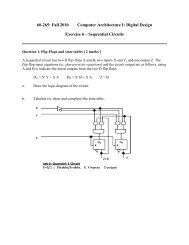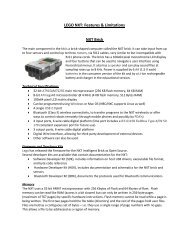Adjectives: A Uniform Semantic Approach - University of Windsor
Adjectives: A Uniform Semantic Approach - University of Windsor
Adjectives: A Uniform Semantic Approach - University of Windsor
Create successful ePaper yourself
Turn your PDF publications into a flip-book with our unique Google optimized e-Paper software.
<strong>Adjectives</strong>: A <strong>Uniform</strong> <strong>Semantic</strong> <strong>Approach</strong> 335<br />
The elements x1 and x2 are equal iff x1 and x2 are the one and the same and both<br />
<strong>of</strong> the same type.<br />
We, also, require members <strong>of</strong> adjectives that are considered (by and large)<br />
independent or absolute, e.g. ‘red’, be given the most generic type “T”. This type has<br />
the lowest precedence amongst types. It is the supertype <strong>of</strong> every type in the type<br />
hierarchy.<br />
3.2 Examples Using the New <strong>Approach</strong><br />
This section contains examples (3-6) using the new approach. The examples cover<br />
different kinds <strong>of</strong> adjective-noun combinations.<br />
Maria is a vegetarian dancer<br />
Maria is a singer<br />
---------------------<br />
Therefore, Maria is a vegetarian singer (valid)<br />
Set representation:<br />
Dancer= {m: dancer ,…} : dancer<br />
Singer= {m: singer,…} : singer<br />
Vegetarian= {m:T, …}: vegetarian where m = ||Maria||<br />
Inference example:<br />
├ m ∈ (Vegetarian ∩ Singer ) Expected answer: True<br />
Reason: type “T” is a neutral type. It is overridden by all other types.<br />
Maria is a skillful dancer<br />
Maria is a singer<br />
---------------------<br />
Therefore, Maria is a skillful singer (invalid)<br />
(Here, we distinguish two senses <strong>of</strong> ‘skillful’, i.e. the reference-modifying and the<br />
referent-modifying. However, it is possible to use one set only)<br />
Set representation:<br />
Dancer= {m: dancer,…} : dancer<br />
Singer= {m: singer,…} : singer<br />
Skillful-1= {m: T,…} :skillful-1 i.e. the referent-modifying<br />
Skillful-2= {m: dancer,…}:skillful-2 i.e. the reference-modifying<br />
Inference example:<br />
├ m ∈ (Skillfu1-2 ∩ Singer) Expected answer: False<br />
Reason: the member “m: singer” is not in the intersection because <strong>of</strong> a type<br />
mismatch. That is, the element “m: dancer” <strong>of</strong> the set Skillful-2 does not match any<br />
member <strong>of</strong> the set Singer whose members are all <strong>of</strong> type singer.<br />
John is a guitarist<br />
John is a veteran musician<br />
-------------------------------<br />
Therefore, John is a veteran guitarist (invalid)<br />
(3)<br />
(4)<br />
(5)







